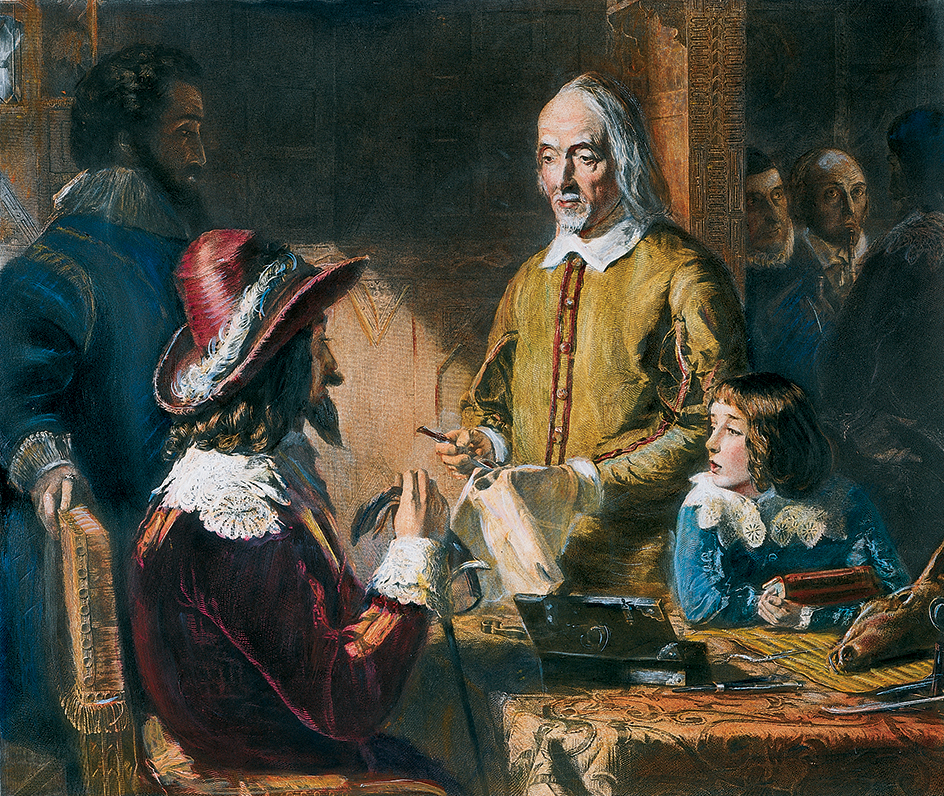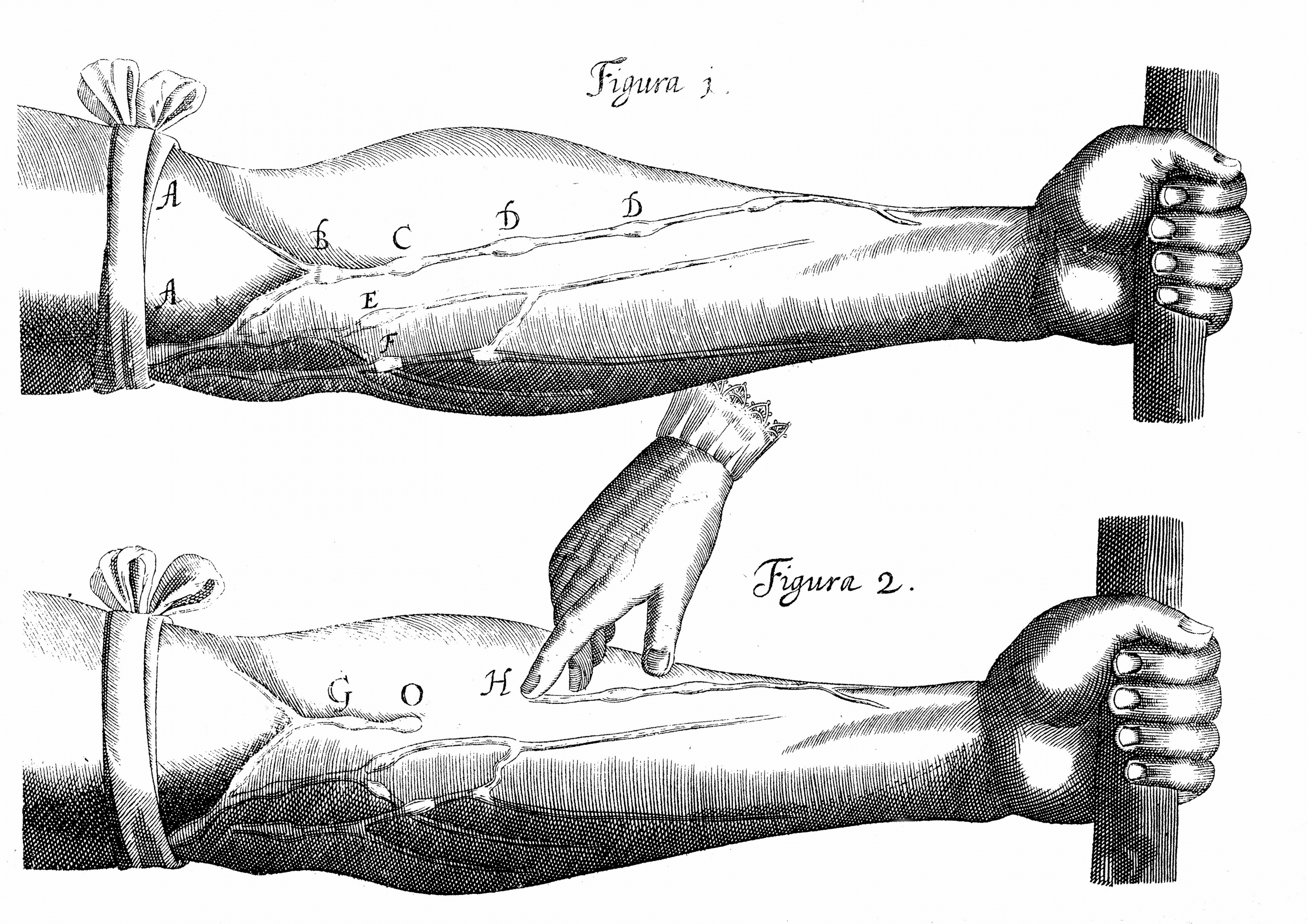Harvey, William (1578-1657), was an English physician who became famous for his discovery of how blood circulates in mammals, including human beings. He described his discovery in An Anatomical Study of the Motion of the Heart and of the Blood in Animals (1628). This work became the basis for all modern research on the heart and blood vessels.

Harvey based his discovery on firsthand observations and on dissections of humans and animals. Harvey’s findings conflicted with the widely accepted theory of blood circulation originated by Galen, who was an ancient Greek physician. Galen thought that the liver converted food into blood. Galen also believed that blood flowed through the veins to the rest of the body, where it was consumed.

Through his experiments, Harvey demonstrated that the heart works like a pump, forcing blood to flow through the arteries to the body. He also showed that the blood returns to the heart through the veins, thus forming a system of closed circulation. In addition, Harvey proved that the pulse is caused by the expansion of the arteries following each contraction of the heart. He showed that the heart’s right ventricle (pumping chamber) supplies blood to the lungs and that the left ventricle pumps blood to the rest of the body. See Circulatory system; Heart.
Harvey was born on April 1, 1578, in Folkestone, Kent, England. From 1593 to 1599, he studied at Gonville and Caius College in Cambridge. In 1602, he received a doctorate in medicine from the University of Padua. He then began practicing medicine in London. In 1607, he was elected to the Royal College of Physicians. He served as a physician to Kings James I and Charles I. In 1651, Harvey published Essays on the Generation of Animals, considered a basis for modern embryology. This work deals with reproduction, particularly the part that the egg plays in reproduction. Harvey died on June 3, 1657.
